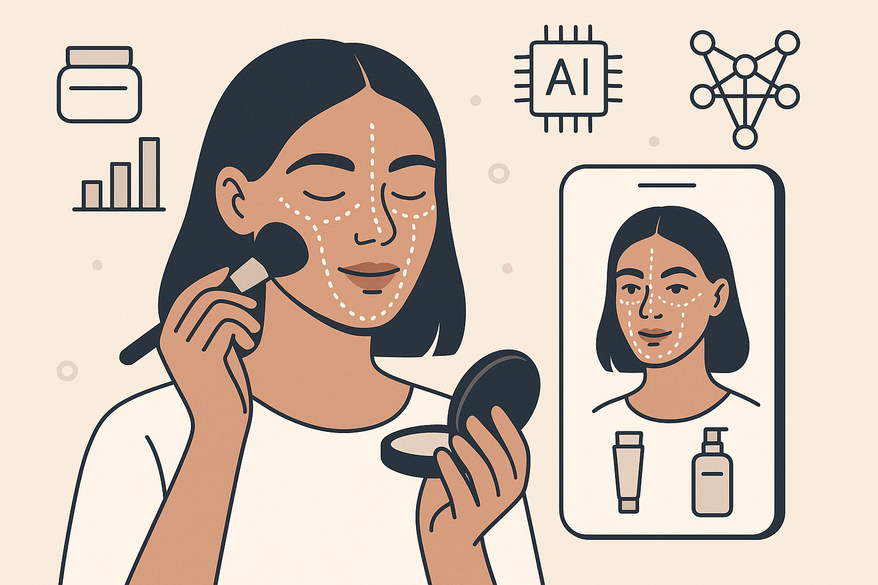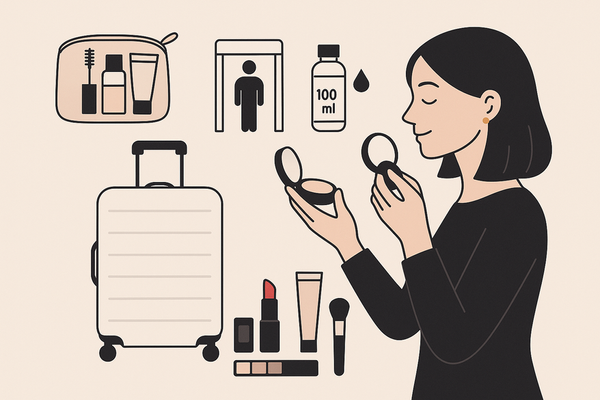Evolving Beauty Habits with AI Advancements: Transforming Personalized Routines
Discover how evolving beauty habits with AI advancements are revolutionizing skincare and makeup routines with personalized, data-driven innovations.

Estimated reading time: 7 minutes
Key Takeaways
- Personalization at Scale: AI-driven tools deliver custom skincare, makeup, and haircare recommendations.
- Data-Driven Decisions: Machine learning, data analytics, and computer vision replace guesswork with insights.
- Rising Innovations: Predictive analytics, 3D printing, and biotech ingredients are shaping the future.
- Practical Tips: Experiment with virtual try-ons, review privacy policies, and integrate AI tools professionally.
Table of Contents
- Historical Overview
- Understanding AI's Role
- Current Advancements
- Emerging Trends
- Practical Takeaways
- Conclusion
Historical Overview: From Generic Routines to Data-Driven Care
Traditional beauty routines were a one-size-fits-all affair: cleanse, tone, moisturize; generic makeup palettes; in-store color-matching devices. Early tech milestones like department store color-match machines and at-home pH strips paved the way for digital skin-analysis tools in the early 2000s. By the mid-2010s, smartphone apps collected big data on skin and environment. Today, sophisticated AI scans selfies in real time, suggests products, and predicts your skin’s future needs.
Timeline of milestones:
- Early 2000s: First digital skin-analysis tools measured moisture and oil levels.
- Mid-2010s: Smartphone apps gathered big data on skin type and environmental triggers.
- Today: AI algorithms analyze selfies, suggest routines, and predict needs instantly.
“Evolving beauty habits with AI advancements” turns guesswork into personalized, data-driven care.
Understanding AI and Its Role in the Beauty Industry
Artificial intelligence uses computer systems to mimic human intelligence. In beauty, AI analyzes large data sets through data analytics, learns via machine learning, and interprets images with computer vision.
- Machine Learning: Refines product suggestions over time.
- Data Analytics: Tracks preferences, ingredient performance, and seasonal changes.
- Computer Vision: Scans selfies to spot dryness, breakouts, and fine lines.
For example, quizzes plus image analysis recommend custom routines, Prose Hair tailors formulas to your hair and climate, and Pure Culture Beauty uses skin microbiome tests for targeted serums.
Brands like L’Oréal and MAC offer virtual try-on apps—see our previous post on Virtual Makeup Try-On: Revolutionizing Beauty with AR and AI for more details.
I tested one app in under a minute: it scanned my tone, suggested three foundation shades, and let me swipe them live—no more color-matching anxiety.
Current Advancements in AI for Beauty
Beyond recommendations, today’s AI powers product development and enriches consumer experiences:
Product Development
- Ingredient Optimization: AI analyzes hundreds of components to find effective, safe blends.
- Automated Formulation Engines: Software proposes novel formulas for niche concerns like adult acne or rosacea.
Consumer Experience Enhancements
- Personalized Formulations: Labs mix bespoke serums or hair masks based on customer data.
- AR-Powered Virtual Try-Ons: Instantly see lipstick or eyeshadow shades through your phone camera.
- Blockchain Ingredient Tracking: Ensures full transparency and authenticity of raw materials.
Case Studies
- JCPenney’s AI Skin Advisor kiosks match products in seconds.
- Murad, Living Proof, and Ulta Beauty use the Revieve platform for diagnostics.
- Prose and Pure Culture Beauty employ skin microbiome tests for ultra-personalized care.
Tools like Makeup Check AI use machine learning to refine suggestions in real time.
This streamlines every step from color matching to progress tracking.
Emerging Trends and Future Possibilities
The next wave of beauty tech will go deeper. Look for:
- Predictive Analytics: AI forecasts skin aging and environmental impacts, enabling preventative routines.
- Longevity Skincare: Molecular research discovers potent anti-aging actives via deep learning.
- Sustainability & Biotech: Lab-grown ingredients and blockchain supply chains reduce footprint and ensure transparency.
- 3D-Printed Makeup: At-home AI printers mix custom shades and textures on demand.
- Challenges & Ethics: Data privacy and algorithm transparency must guide every innovation.
Practical Takeaways for Readers
For Consumers:
- Experiment with virtual try-on apps and at-home AI diagnostics—see our personalized makeup guide.
- Review brand privacy policies to understand how your data is used.
For Beauty Professionals:
- Integrate AI tools like skin analysis devices or formulation platforms into your consultations.
- Partner with tech providers for diagnostics and personalization services.
- Invest in ongoing AI education to stay competitive in a data-driven market.
Conclusion
We’ve journeyed from generic routines to AI-driven personalization, explored machine learning, data analytics, and computer vision in beauty, and seen real-world applications like virtual try-ons and bespoke formulations. Emerging trends such as predictive analytics, biotech ingredients, and 3D-printed makeup promise a smarter, greener future—if guided by strong ethics around privacy and transparency.
As you adopt evolving beauty habits with AI advancements, share your experiences and questions. Let’s build a smarter, more transparent industry together!
Explore more on Makeup Check AI.
FAQ
How does AI personalize my beauty routine?
AI combines data analytics, machine learning, and computer vision to analyze your skin, track preferences, and recommend tailored products.
Is my data secure when using virtual try-on apps?
Reputable brands employ secure protocols and transparent privacy policies. Always review how your biometric data is stored and used.
What future trends should I watch?
Keep an eye on predictive analytics, biotech ingredients, and 3D-printed makeup for the next wave of beauty innovation.




